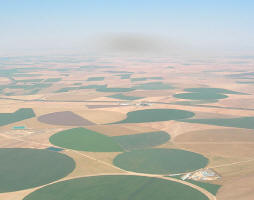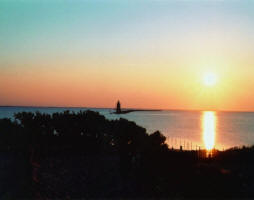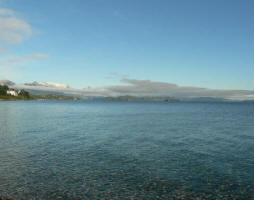 Irrigation threatening steppe birds in Mediterranean wetlands
Irrigation threatening steppe birds in Mediterranean wetlands
Intensive irrigation of agricultural land in a Mediterranean water basin is altering the habitats of associated wetlands and changing the balance of the bird population living there, according to a recent study.
The Mar Menor coastal lagoon is located in the Southeast of Spain. Inland there are an associated series of wetlands of ecological interest, protected by the Natura 2000 Network1. The habitats of the wetlands are predominantly dry grasslands (salt steppes), but also include sandy areas, salt marshes and reedbeds.
Agriculture is the main use of the land in the Mar Menor watershed, which drains into the lagoon: over the last few decades the area under irrigation has increased substantially. Drainage from agricultural sources enters the lagoon by two main routes: directly via surface outlets and diffusely via under-surface flow through the surrounding wetlands.
Steppe birds are the key species which also support the designation of the wetlands as a Specially Protected Area (SPA) under the Birds' Directive2. Since birds are good indicators of agricultural impacts, the researchers analysed how steppe birds have been affected by agricultural changes in the watershed. Between 1984 and 2008, bird surveys were carried out (not including aerial feeders and raptors) in one of the wetlands (Marina del Carmolí).
In general, the results suggest changes in the community of birds found in the wetlands reflect changes in land use at the watershed scale.
Increased drainage from agricultural irrigation has had a significant impact on the water regime of the wetlands. During the time of the study, the higher input of water has substantially shrunk the areas of semi-arid natural salt steppe and expanded the areas of salt marshes and reedbeds.
In this time, the total number of birds has been reduced, but the number and diversity of species has increased. In particular, the numbers of birds belonging to the family Alaudidae, which typify steppe birds, have fallen significantly, while the numbers of the families Turdidae and Fringillidae (more typical of saltmarsh and reeds) have proportionately increased.
Previous work suggests there is a five year time lag between changes in the area of irrigated land at watershed scale and the conversion of salt steppe to salt marsh and then to reedbeds, due mainly to the influence of subsurface flows from irrigated lands. Changes in the bird community from the mid 1980s onwards demonstrate a similar relationship to this time lag and occurred in three stages: 1984-1989, birds typical of the salt steppe habitat were predominant; from the middle of the 1990s, the salt steppe community was gradually replaced by a saltmarsh one; and from 2003 onwards, there is a more varied community of birds, including scrubland (saltmarsh) and reedbed species.
These changes have important implications for the conservation of steppe birds. In relation to the original community, there has been a loss in conservation value. Annex 1 bird species, protected under the Birds' Directive, have been negatively affected, suggesting better monitoring is required. The researchers also suggest it might be possible to manage cropland adjacent to the wetlands to protect bird biodiversity in these wetlands.
1. See: http://ec.europa.eu/environment/nature/natura2000/index_en.htm
2. See: http://ec.europa.eu/environment/nature/legislation/birdsdirective/index_en.htm
Source: Robledano, F., Esteve, M.A., Farinós, P. et al. (2010). Terrestrial birds as indicators of agricultural-induced changes and associated loss in conservation value of Mediterranean wetlands. Ecological Indicators. 10: 274-286.
Contact: frobleda@um.es
| Contact information |
Email: frobleda@um.es |
|---|---|
| News type | Inbrief |
| File link |
http://ec.europa.eu/environment/nature/natura2000/index_en.htm |
| Source of information | EC |
| Keyword(s) | wetlands, Irrigation |
| Subject(s) | AGRICULTURE , METHTODOLOGY - STATISTICS - DECISION AID , NATURAL MEDIUM , POLICY-WATER POLICY AND WATER MANAGEMENT , PREVENTION AND NUISANCES POLLUTION |
| Geographical coverage | EU |
| News date | 22/01/2010 |
| Working language(s) | ENGLISH |
 you are not logged in
you are not logged in





